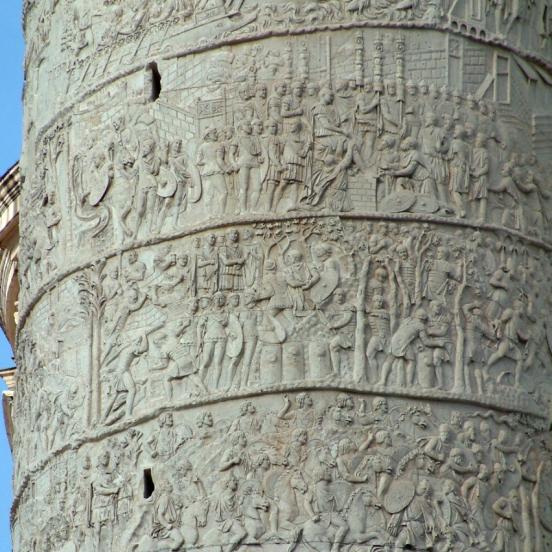Trajan’s Column
Trajan’s Column stood next to emperor Trajan’s (98-117) forum. It not only commemorated the emperor’s victory in the Dacian wars, but also served as a tomb for Trajan and his wife – their remains were placed in two gold urns in the pedestal of the column. Since the 16th century a statue of St. Peter has stood on the top of the column standing 128 Roman feet (38.4 metres) tall, but the gilded statue of Trajan wearing military clothes was originally placed on the top. A spiral staircase carved inside the column leads to the balcony underneath the statue. The pedestal was decorated with spoils of war – Dacian weapons, armour and four eagles captured in the battles – and a victorious laurel wreath was carved between the pedestal and the column. Nevertheless, the most impressive element of the monument is the series of reliefs which spiral upwards and cover the entire surface of the column. The reliefs present the history of the first and second Dacian wars (101–102 and 105–106). The scenes of 200 metres in length not only portrayed battles, but also other events: marching army, imperial oration, negotiations with the Dacians and offering sacrifices.

